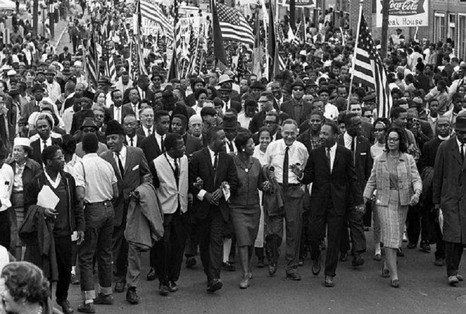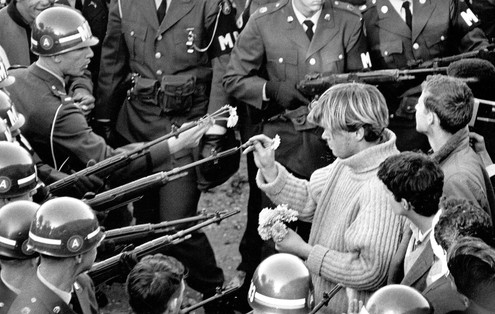“Counter-Cultures and the Ethics of Design Practise” - by Alastair Macdonald
- Fergus Telfer

- Mar 8, 2020
- 4 min read
This week’s design and technology lecture was taken by Professor Alastair Macdonald; a Senior Researcher at the School of Design and an ex-program leader of PDE here at GSA. His lecture discussed countercultures, which I initially thought was an unusual topic for a design lecture especially when Joni Mitchell’s “Big Yellow Taxi” opened for him. So, what does “Big Yellow Taxi” have to do with product design?
Counterculture: the culture and lifestyle of those people, especially among the young, who reject or oppose the dominant values and behaviour of society.
When we think of countercultures, I think for best part, evocative historic events such as the USA’s rebellious youth marching to end the Vietnam war, the Civil Rights and Feminist movements of the 1960s and Hippies between 1960-70 all spring to mind. In reality, countercultures are much more diverse and plentiful than a nostalgic glance at the sixties but this was a time of significant change for the Western World, generally led by turmoil in America. This turbulent and exciting time period also forged new schools of thought for designers; as well as philosophies and predictions on the relevance of design that contradicted the standard industrial design of the times. Alastair Macdonald showed us some of these designers that inevitably formed their own counterculture. This was an eye opener for myself and a refreshing alternative perspective on climate change.
In part, several of these designers were heavily influenced by the iconic images captured by Apollo 8 as it reached the moon on Christmas Eve, 1968. The entirety of our planet captured in a single image surrounded by the black abyss was something the human race had never seen before. The insignificance of human life and minuscule scale of our existence all represented by one picture; an idea expanded on in Eames’ memorable ‘Power of Ten’ short film. Stewart Brand’s ‘Whole Earth Catalogue’ and Buckminster Fuller’s ‘Operating Manual for Spaceship Earth’ were two publications in the late 1960s that took inspiration from Cosmic exploration. Both centre around the common idea that Earth has finite resources, it cannot be resupplied and as a species, we must be aware of our greater impact. This was in direct opposition to the industrial design of the time and the consumer culture growing from the development from mass manufacturing. These salmons of the design world battled against the currents and yet, with the power of hindsight, we can clearly see just how correct they were and how relevant their philosophies would still be some 50 years later.

The final example given in the lecture that really captured my attention was a quote from Papanek’s ‘Design for the Real World’ which reads;
“There are professions more harmful than industrial design, but only a few”
This resonated with me; the industry I am studying and preparing to join by default is constantly producing new things. Do I want to be plagued with the guilt of contributing to a toxic culture of consumption that is potentially catastrophic and ultimately, secures the future of the planet? Or can I be part of the solution? Is it actually possible for an individual to inspire a change of behaviour?

One man taking sustainability into his own hands is Colin Beavan, the author and star of the documentary; ‘No Impact Man’ (2008). After the lecture we watched the movie which displayed his family attempting to live for a year in central New York whilst having no impact on the environment. This involved no mains electricity in the home, no motorised transport, no packaging, eating exclusively local food, no single use products (yup, no toilet paper) and no buying new clothes. There were a lot of talking points and messages taken from the movie; his wife’s face at the idea of washing reusable nappies in the bathtub and the homemade ceramic fridge that didn’t work provided comical relief from the important message that middle America gets all too defensive about. Individuals can make a difference. Too many journalists were there to turn up their noses and drag him over the coals by labelling this as a publicity stunt to sell books, but if that was his goal, wouldn’t there be less difficult ways that didn’t raise such meaningful questions. There is a deep rooted guilt for many in the knowledge that they should and can do more for the planet. But that’s the problem, we talk in terms of global climate change, in distant statistics, instead of human actions and community efforts. As Colin explained, in making some achievable changes, it actually improved their lives directly; he lost some recently put on weight, they became better parents, and eating locally translated into a greater appreciation for seasonal changes above spiced lattes. I want to end this blog on a quote from Colin that really summarises the movie:
“Can I live on this planet doing more good than harm?”
That could mean different things to different people. To me, it means it’s time to hold ourselves accountable for our actions because their impacts will ripple through our own communities and, even though you may not want to think about it, those waves may be irreversible already.

For more information on Colin, please find his website at: https://colinbeavan.com/
Picture Credits:




















Comments